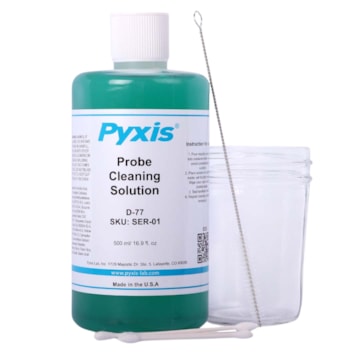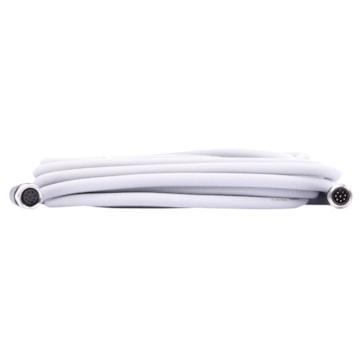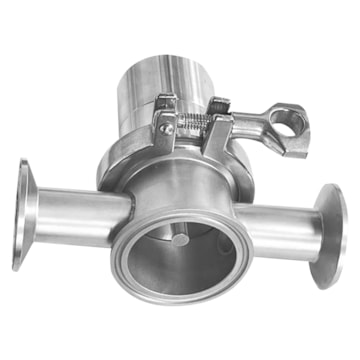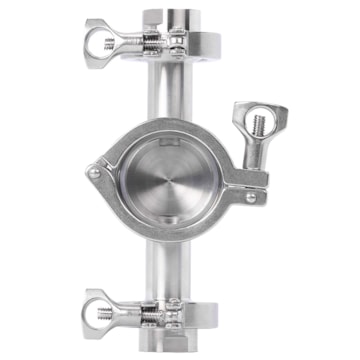
Pyxis RT-200 PRISM High Temperature Inline Refractometer
RS-485 Modbus RTU output of temperature, refractive index and other diagnosis parameters.
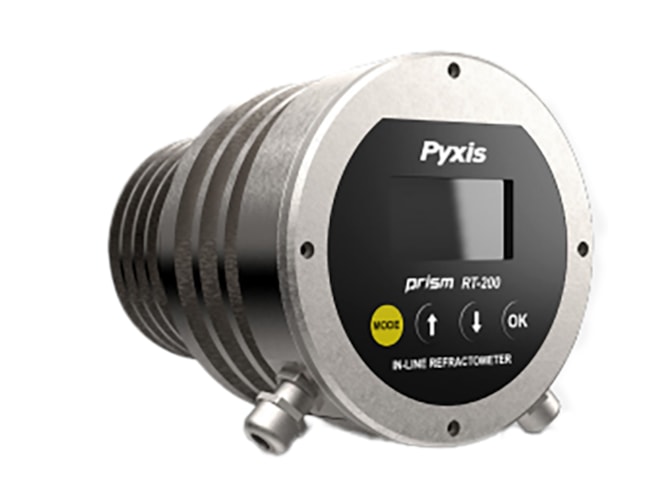
Overview
Features
- ≤142psi (0.98MPa) / <13.5 GPM (9.8ft/s) max sample pressure / flow
- Range of measurement:
- Refractive Index: 1.30000-1.5100
- BRIX: 0.00-85.00%
- Mono-Ethylene Glycol: 0.00-100.00%
- Mono-Propylene Glycol: 0.00-100.00%
- Advanced Low Viscosity Fluid: 0.00-100.00%
- Temperature: -20-80 °C
- Resolution:
- Refractive Index: 0.0001
- BRIX & Glycol: 0.1%
- Accuracy:
- Refractive Index: ±0.0002
- BRIX & Glycol: ±0.2%
What's in the Box
- 316L stainless steel tri-clamp flow cell sssembly (P/N 56206)
- MA-1.5CR cable (1.5 meter/ 4.9 ft 8pin male adapter/flying lead) (P/N 50746)
- Prism RT-100 wall outlet power adapter (110VAC-24VDC-2Pin) (P/N 56207)
Description
The Pyxis RT-200 PRISM High Temperature Inline Refractometer is an inline digital refractometer that measures the refractive index of a liquid sample and provides a direct reading of highly accurate concentration values for a wide variety of water and process related applications. RT-200 is particularly suitable for sugar production and other high-temperature processes. It is a stand-alone device capable of self-sustained operation, live data display and data logging.
The RT-200 Prism also offers fully integrated 4-20mA and RS-485 Modbus output signals for connectivity to any microprocessor-based controller, display, PLC or DCS network. The RT-200 Prism has built-in temperature dependent equations to convert the measured sample temperature and refractive index to the percentage concentration of Mono Ethylene Glycol (MEG), Mono Propylene Glycol (MPG), Sugar Content (Brix) and Advanced Low Viscosity Fluid (ALV). Built-in Bluetooth 5.0 makes it easier to connect to your phone. Additional concentration curves can be added via uPyxis APP.
The RT-200 Prism is a very robust, digital sensor capable of operating in contaminated fluid samples. It is important however to note that users should take all precautions to mitigate and filter suspended solids from the sample stream prior to the sensor to avoid tenacious deposit build-up on the sensor eye.
Documents
Accessories
Need Help? Call a Flow engineer at 1-800-884-4967
We're open 8:00 am to 5:30 pm ET
